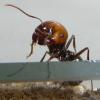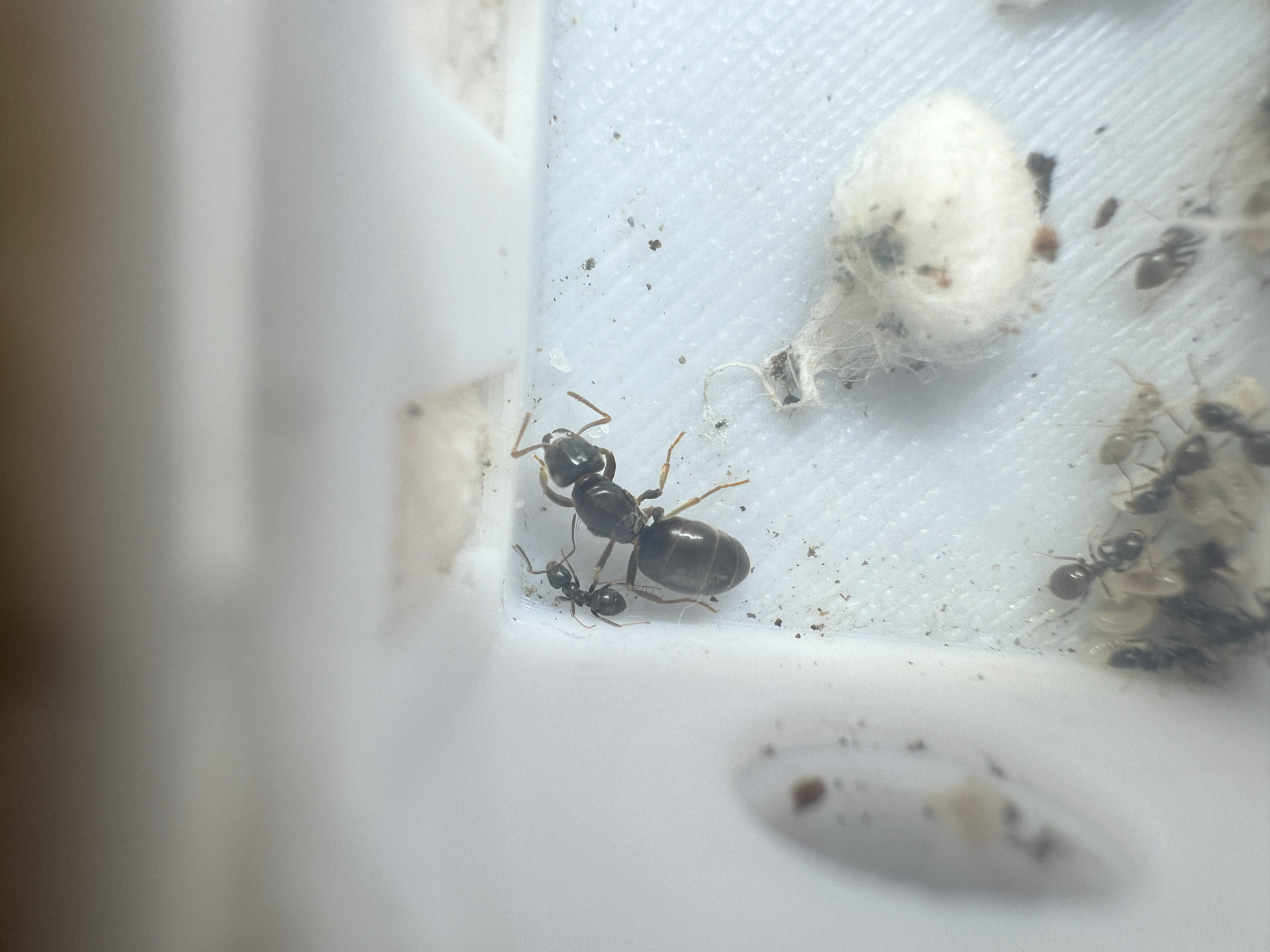So I have found L aphidicola before and they are about 5-6 mm long but the one is have IS A MASSIVE 8MM (in Québec that is a lot for ants) so what do I call her for now? Any idea for id?
All such species AntMaps records in Quebec (aphidicola, minitus, speculiventris, subglaber) are usually around 5-6 mm. I'm inclined to believe it may be just a large queen (a 'macrogyne') of one of those species (except minitus, which are even smaller, hence the name).
I found her in an area that had like 5 or so giant queens like her, is that normal?
So much about ant keeping is not known, so it is hard to say. There is the potential it is a new record in your area, so perhaps look at species that are from territories from around your area. The best scenario is that you preserve one in ethanol and get into contact with an entomology center near you.
So after doing some quick research, my best guess is a Lasius subglaber queen, she might be a brown morph because usually they are more reddish on their head and thorax. but at the same time, I realised that I may have a dead subglaber queen and by comparing her to the dead queen, she still looks huge.
I am probably not able to send one to the lab because of my mom
(also sorry mods for this post not being in the id section, the topic has changed a lot ever since the first post)
Edited by OwlThatLikesAnts, October 11 2024 - 2:09 PM.
Currently keeping:
1x Formica subsericea, 20+ workers + a decently sized brood pile (35-40)
1x Crematogaster cerasi 3 workers with brood (been going all winter)
*As you watch your ants march, remember that every thing begins with a small step and continued by diligence and shared dreams*
-A.T (Me)





















